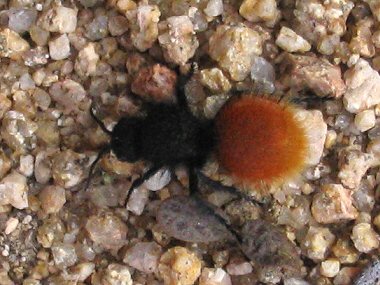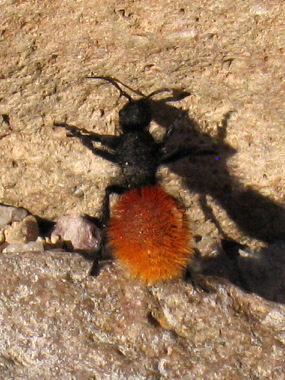Despite their name, Velvet Ants are not
ants at all, but wasps. They get their name from the fact that their
bodies are covered with fine hairs and females (which are flightless)
resem ble
ants. Males can fly, but they are rarely seen. Velvet Ants range in size
from 1/8 inch to 1 inch and vary greatly in appearance within the more
than 150 species that inhabit the United States. ble
ants. Males can fly, but they are rarely seen. Velvet Ants range in size
from 1/8 inch to 1 inch and vary greatly in appearance within the more
than 150 species that inhabit the United States.
|
The photo at right depicts a Red
Velvet Ant (Dasymusilla Magnifica for those interested in
scientific classifications), one of the more common Velvet Ants
found in the desert southwest. |
Velvet Ants are brightly colored to signify that they
are not to be trifled with. Though males can not sting, the sting of the
female ant is reported to be extremely painful (they have been given the
nickname 'cow killer' because of this fact). Despite their cute, furry
appearance, they should not be picked up or played with (though they
have been known to squeak, when captured). The insects mainly feed upon
the nectar of flowering plants. After mating, the female will seek out a
wasp or bee nest and lay an egg on a host larva or pupa. The ant is
protected from the stings of other wasps and bees by its hard
exoskeleton. When the velvet ant larva hatches it then feeds on the
host.
 |

